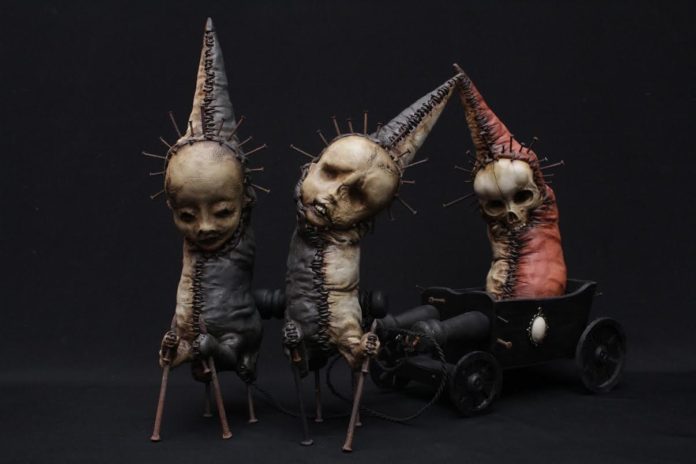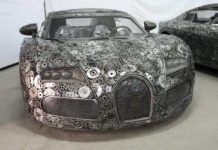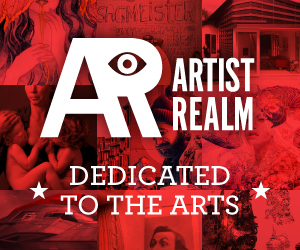Emil Melmoth’s wax, anatomical models revel in a dark and surreal environment, and where his depraved sculptures live in affliction: fragile beings in an eternally harrowing state of mind. Melmoth projects the sublime and ethereal concepts of death onto his creations, portraying pessimism, nihilism, existentialism, the question of transcendence beyond death, mental instability, and self-destruction, all ideas represented in his invigorating constructs. Many of his pieces express a strong meditation on human


Emil Melmoth’s wax, anatomical models revel in a dark and surreal environment, and where his depraved sculptures live in affliction: fragile beings in an eternally harrowing state of mind. Melmoth projects the sublime and ethereal concepts of death onto his creations, portraying pessimism, nihilism, existentialism, the question of transcendence beyond death, mental instability, and self-destruction, all ideas represented in his invigorating constructs.

Many of his pieces express a strong meditation on human fragility and life in general; one of the most prevalent motifs in Melmoth’s creations are figures adorned with metal nails, referencing how nails keep things together but also cause pain, a powerful message of the staying power of negative thoughts on the human psyche. All of these ideas are interpreted and molded into Melmoth’s unique compositions of writing forms and macabre expressions, sculptures that allow for viewers to enter this strange and bizarre world whose atmosphere bleeds into thoughts of our inner selves. Melmoth’s works have a darkly surreal allure to them, as the compositions fuse religious symbolism and
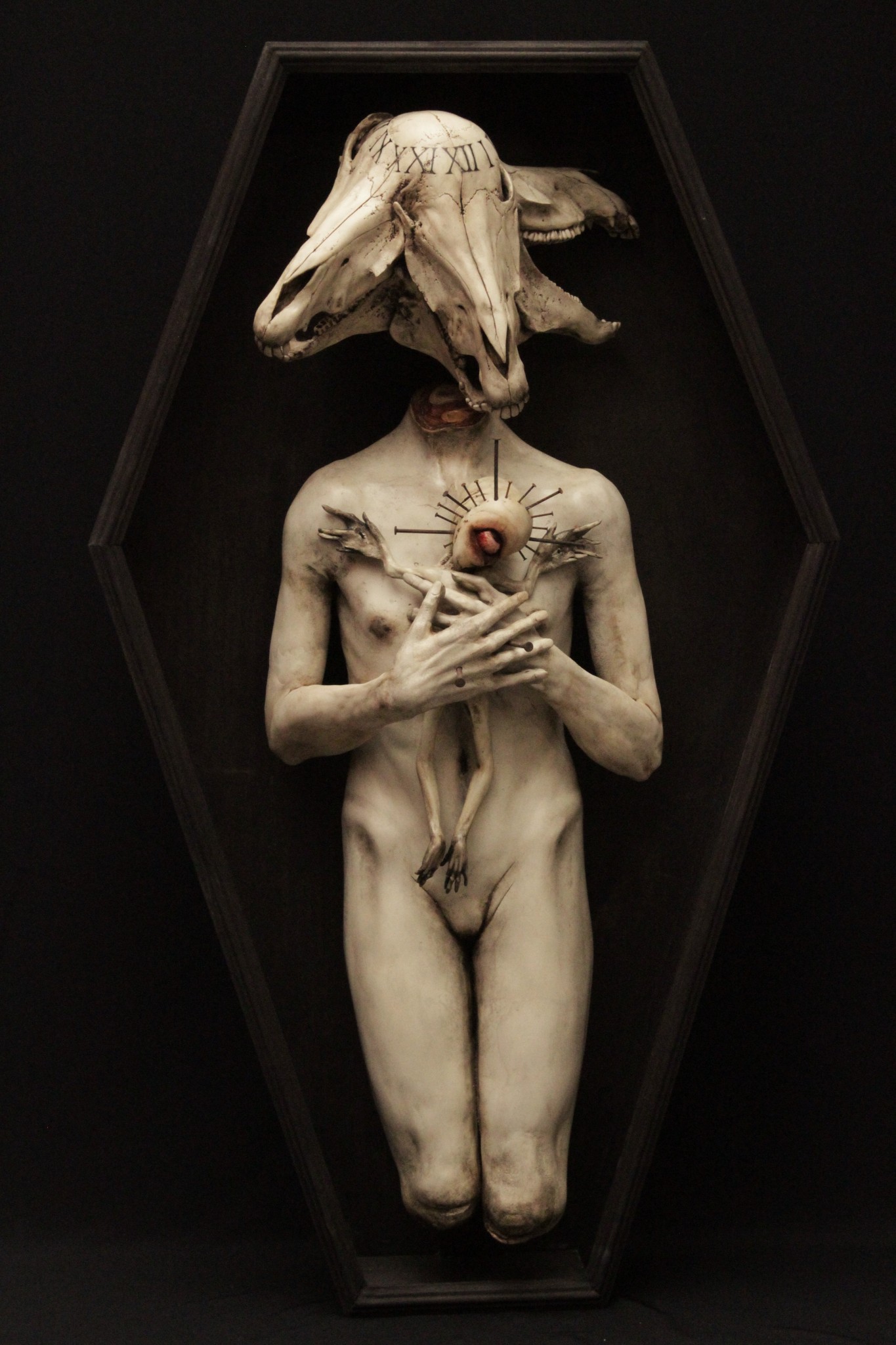
Melmoth’s works have a darkly surreal allure to them, as the compositions fuse religious symbolism and carnivalesque demeanor within a surgical overtone, juxtaposing ideas of religious immortality and paradise with the reality of bodily imperfection, dissection, and truths of scientific knowledge. Horrifically mutilated and contorted figures with missing limbs in iconic poses such as the crucifixion make up Melmoth’s body of work. Another common motif is the “Penitent cap,” a hat worn by many of his figures alluding to a dunce, or a buffoon who is part of a circus freak show. These hats generate conversation comparing human nature and society to a freak show in which we serve as the dreaded attractions of his nihilistic view. The aesthetic resources used by the artist goes mainly from the hand of old

The aesthetic resources used by the artist goes mainly from the hand of old symbology, commonly religious and sometimes alchemical and astrological, gathering bones, roman numbers, livestock animals, limbs and imperfect bodies generally surgically severed, being those just some of the most recurrent and striking, as well as the aforementioned metal nail, this one especially serves as a common thread between the artworks, for Melmoth, the nail serves as the plumber, the proper needle of a lacerating and modifying twisted acupuncture, this sharp object contains and holds, changes and marks, all represented as the work of the many actions other people have on us, resulting in a reflection of our surroundings, reinforcing the idea of an individual existentialism.

There are many humans who live by the rejection of hope and the destructive nature of the self, and Emil Melmoth’s works remind us of that through the creation of wax, anatomical models. His oddly beautiful sculptures scream out in their broken and disfigured positions.

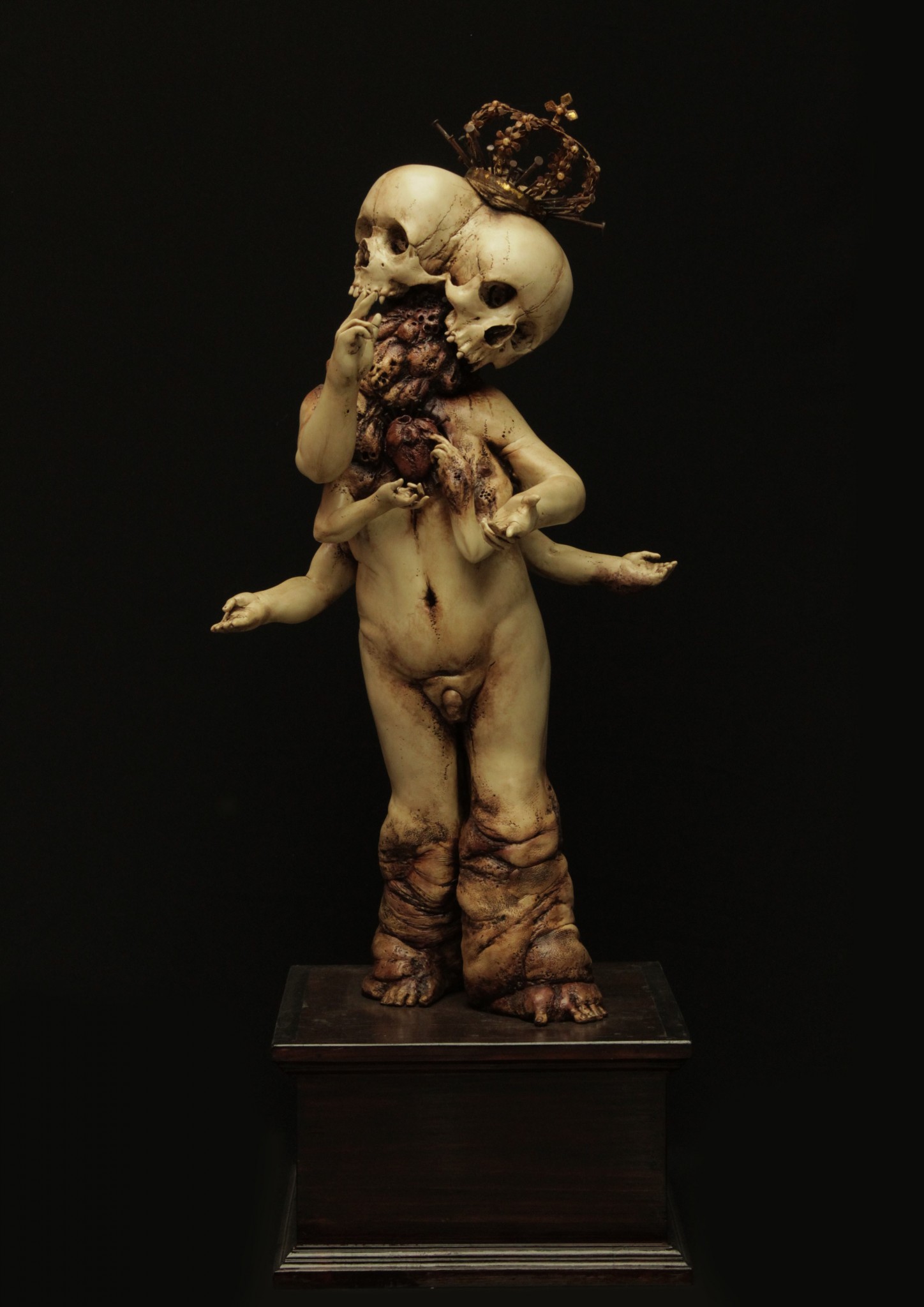
There are many humans who live by the rejection of hope and the destructive nature of the self, and Emil Melmoth’s works remind us of that through the creation of wax, anatomical models. His oddly beautiful sculptures scream out in their broken and disfigured positions.
He is currently being represented by Last Rites Gallery


